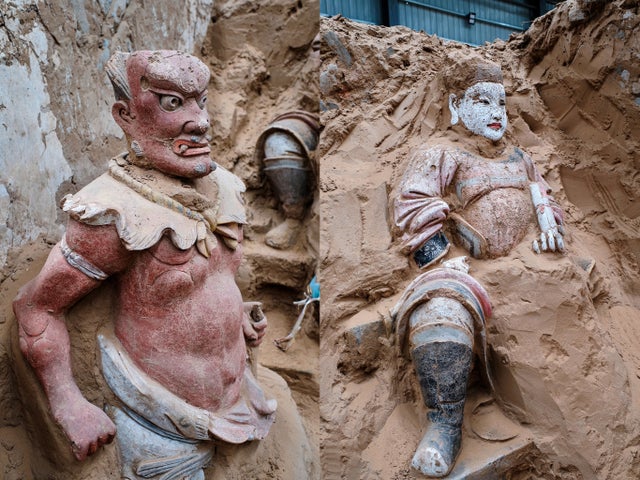Archaeologists have discovered a large burial mound in the Siberian “Valley of the Kings” dating to more than 2,500 years ago.
Valley of the Kings archaeologists unearth treasures in Siberia dating back 2,500 years. Archaeologists have discovered a large burial mound in the Siberian “Valley of the Kings” dating to more than 2,500 years ago.

The ancient tomb holds the remains of five people, including those of a woman and a toddler who was buried with an array of grave goods, such as a crescent moon-shaped pendant, bronze mirror and gold earrings.
The mounds were made by the Scythians — a term used to describe culturally-related nomadic groups that lived on the steppes between the Black Sea and China from about 800 B.C. to about A.D. 300.

The burial mound, known as a kurgan, is located near a previously excavated kurgan belonging to a Scythian chief. Given the proximity of the woman’s burial mound to the chief’s — only 656 feet (200 meters) away — and the valuable artefacts buried with her, “I think that she was a person of great importance in the society of nomads,” said Łukasz Oleszczak, an archaeologist at the Institute of Archaeology at Jagiellonian University in Kraków, who led the Polish team, which worked alongside Russian archaeologists at the site.
The crescent pendant stood out immediately, he added. “She was buried with this artefact that we had believed to be a sign of male burials,” because similarly shaped pendants had previously been found in men’s burials in kurgans in southern Siberia, Oleszczak told Live Science.

Archaeologists have known about the “Valley of the Kings” (a phrase coined by a journalist years ago, harkening to Ancient Egypt’s Valley of the Kings) for more than a century. This vast valley, known as Touran-Uyuk in Tuva, a Russian republic, is replete with numerous Scythian royal burials.
One of the previously excavated kurgans, dating to the eighth or ninth century B.C., holds the earliest known elite Scythian burial ever found. Most of these kurgans, however, have yet to be formally excavated, Oleszczak said.
At the invitation of Russian archaeologists, Oleszczak and his team conducted excavations in the valley during the 2019 and 2021 field seasons.

The kurgan, detected by aerial laser scanning, is about 82 feet (25 m) in diameter and has a destroyed, flattened centre, according to Science in Poland, a news site coordinated by the Polish government and independent journalists.
The kurgan is relatively short today — just 12 inches (30 centimetres) high, Oleszczak added.
During excavations, the archaeologists found the burials of five people. In one chamber, at the centre of the kurgan, the researchers found a looted burial chamber with weapons, including arrows, suggesting that a warrior had been buried there.
The team found the remains of the woman and child in an unlooted wooden burial chamber with three layers of beams.

The sheer amount of wood was likely a symbol of wealth, as “there are not many trees in that area,” Oleszczak said. “Wood is quite valuable.”
According to an anatomical analysis, the woman died at about age 50, and the child was 2 to 3 years old. Along with the crescent pendant, the woman was buried with a number of other grave goods, including gold ornaments near her head that were possibly part of a hat, an iron knife and an engraved wooden comb tied with a leather loop to a bronze mirror.
This comb-mirror duo had been placed in a leather bag. It’s not yet clear how the woman and toddler died, Oleszczak added.

Another burial in the kurgan held the remains of a young male warrior buried with weapons, including a knife, a whetstone and gold ornaments. The fifth burial was found in a pit on the kurgan’s outskirts.
This grave held the remains of a teenager. “Graves of children on the perimeter or just outside the ditch surrounding the barrow are a typical part of the funeral rites of this early Scythian culture,” Oleszczak told Science in Poland.
Using a metal detector, the archaeologists discovered evidence of bronze objects that were left around the kurgan’s perimeter, including dozens of horse-riding equipment pieces, a bronze axe and a goat-shaped ornament. These objects likely became scattered due to deep ploughing from a farm collective that existed in the area in the 20th century.

